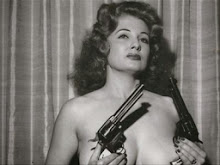
I thought it might be helpful to put into writing my remarks on the aims of this course. I hope keeping these things in mind will be helpful as you investigate and encounter a series of sometimes dense, sometimes confusing material.
We are looking at the overlap between "psychoanalysis" and "literature," what both domains share in common and illuminate about each other. This is a productive enterprise because at a foundational level both subjects focus on the same things: signification, symbolic representation, narrative, interpretation---in other words issues of meaning, intelligibility, and reading.
There are several ways to approach the convergence of "psychoanalysis and literature." One way, a very common way, is to make a "Freudian" reading of literature along the lines of the application his ideas which Freud criticized in his essay, "Wild Psychoanalysis." Freud was appalled that some therapists calling themselves "Freudian" were peddling a crude, simplistic and misunderstood psychoanalysis which reduced it to a set of pat answers to be applied in every situation--i.e. "psychoanalysis says everything is about sex, so if you have a problem it's because you're not getting enough."
This disturbed Freud; not only was it an oversimplified and crudely literal understanding of his ideas, but the patient was "treated" without tact. In his essay, Freud takes "tact" to mean not just a good bedside manner but an overall attitude that allows for the possibility of error, a position of uncertainty towards a final and absolute Truth:
"...one may sometimes make a wrong surmise, and one is never in a position to discover the whole truth..."
What might be a literary version of "wild" psychoanalysis, then? The quite common practice of using Freud's work to provide simple answers and one-dimensional interpretations by either recording obvious "Freudian symbols" (inevitably phallic) or by trying to psychoanalyze a literary text's characters. In other words, paying attention only to the level of "content" in a text (what it means) and ignoring issues of its structure (how it means). Or to put it another way, regarding psychoanalysis itself as a method of answering instead of as a method of questioning, a method of opening up meaning rather than closing it down.
So, in our class we are referring to Freud's work not as an authoritative body of theoretical knowledge, but as a remarkably rich and complex method of reading whose value lies in what it suggests, in what questions it opens up for us. While it is important to have a good sense of the basic theoretical concepts Freud developed, that is not the only, or even the most significant, level on which to approach his work. Remember, there is no final exam where you have to reproduce in perfect exactness any list of technical terms. Work through psychoanalytic categories for what they enable: what (new) ways of reading or seeing do they make possible?


























































No comments:
Post a Comment